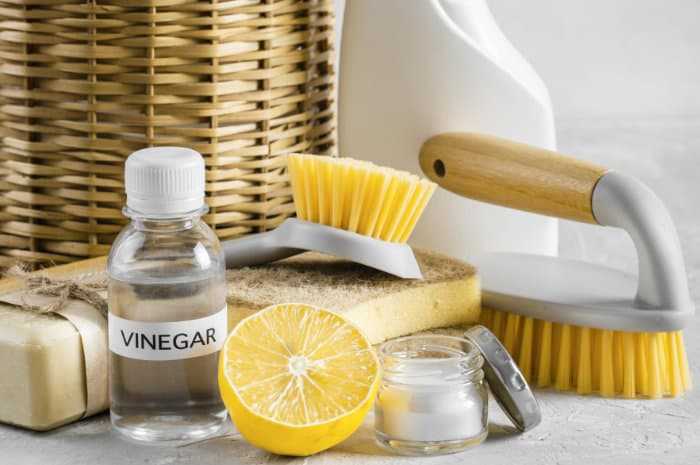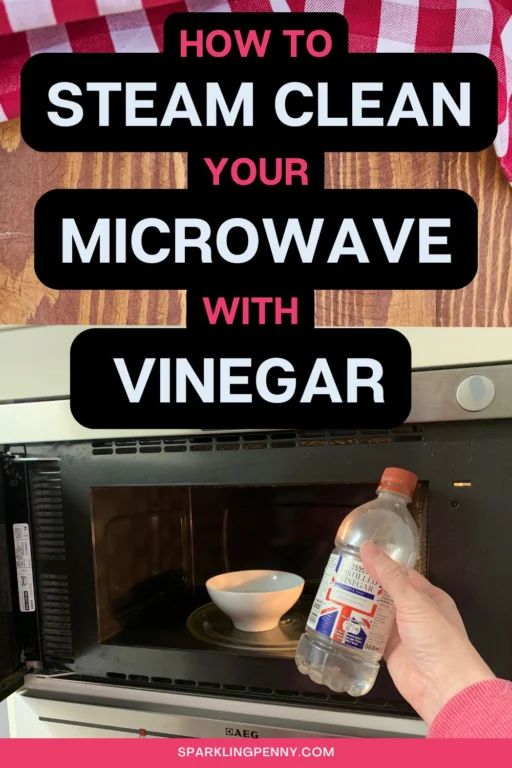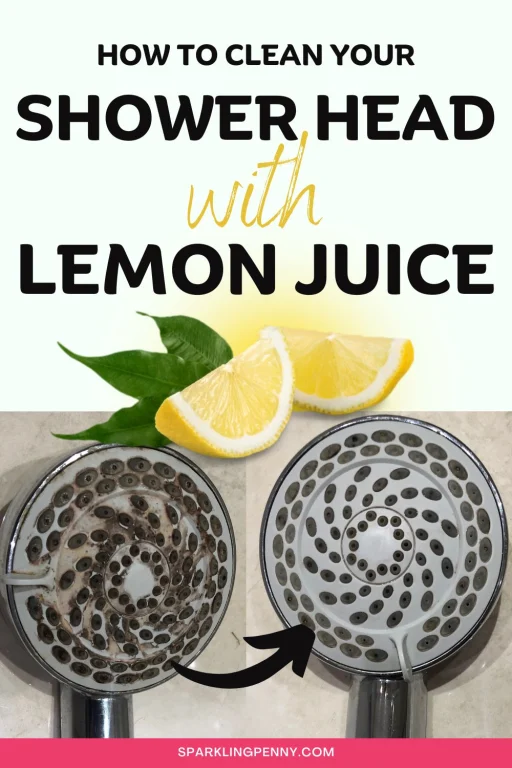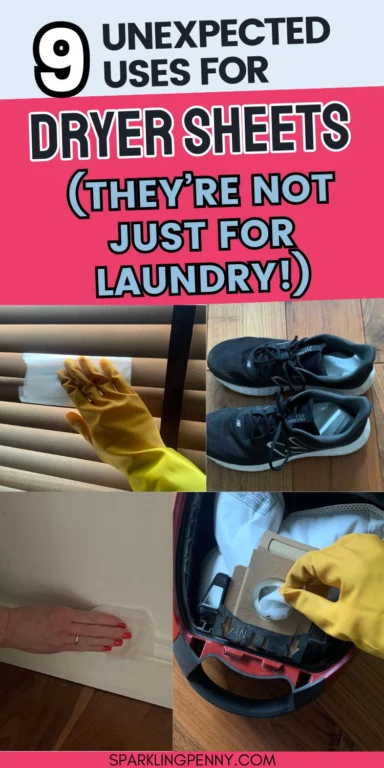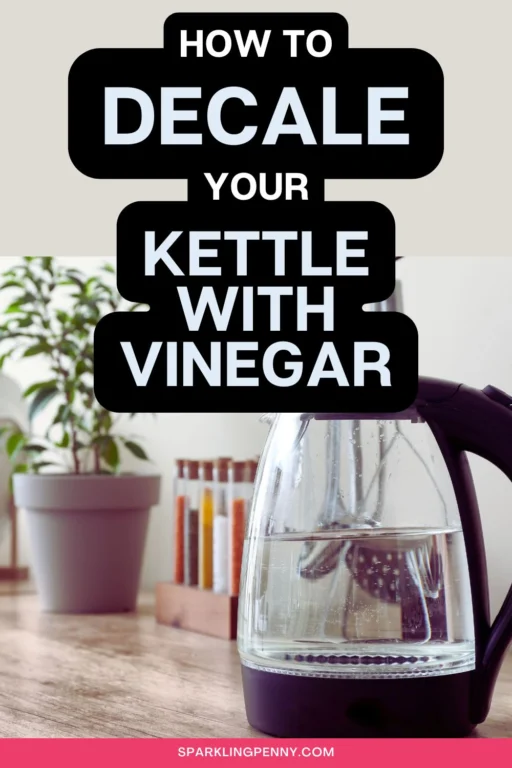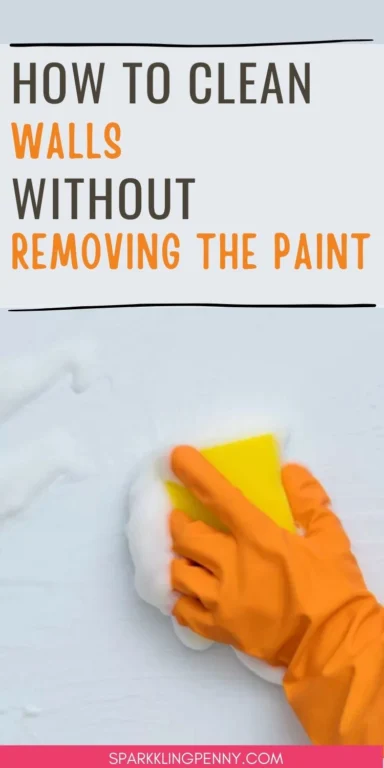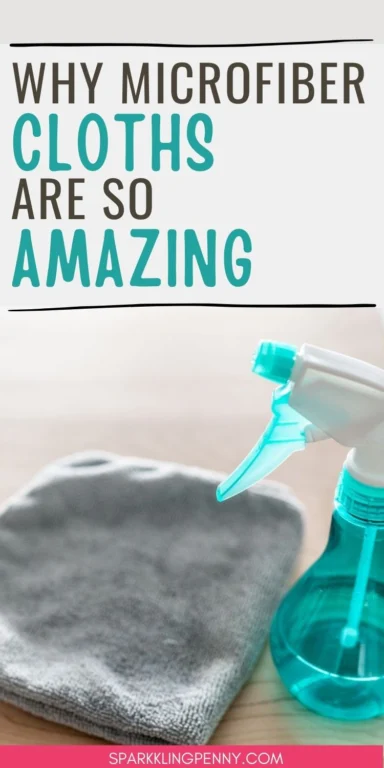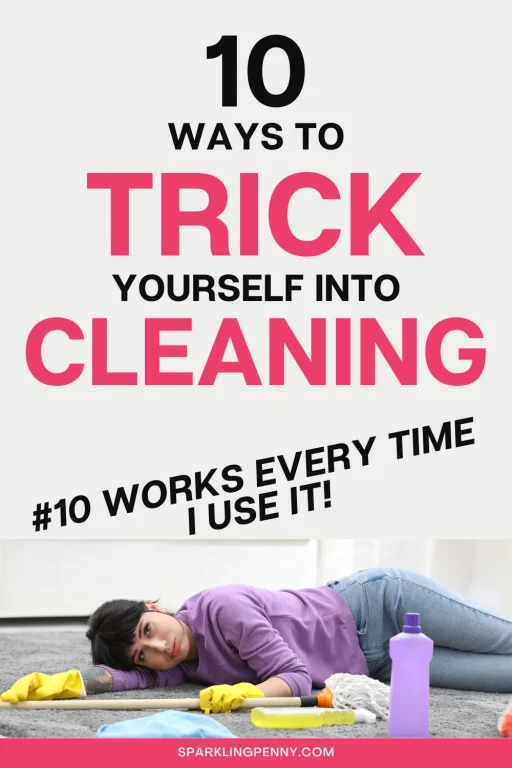Vinegar has been used as a disinfectant for centuries, but it seems that how vinegar kills bacteria is often a mystery.
As well as a good cleaner, vinegar is known to be effective at killing bacteria and germs. It isn’t EPA approved, but it has been proven to kill germs like Staphylococcus responsible for skin infections.
Heads up: I sometimes use affiliate links. When you click these links and make a purchase, I may get a small commission. It won't cost you anything but it helps me to run this site.
How does vinegar kill bacteria?
Vinegar is composed of 5% acetic acid, which is why it can be used to kill bacteria. The acetic acid in vinegar kills off bacteria and viruses by chemically breaking down their proteins and fats.
Three important things to know about vinegar:
- Vinegar needs 30 minutes to kill bacteria and germs.
- Vinegar doesn’t kill the Covid 19 virus.
- Vinegar should not be mixed with bleach as it causes a dangerous toxic vapour
Related reading:
Can vinegar be used as a disinfectant?
According to the science-based environmental non-profit foundation, the David Suzuki Foundation, household white vinegar is about 80% effective at killing germs.
It’s important to note that vinegar is not an EPA (Environmental Protection Agency) registered disinfectant or sanitizer, which means you can’t count on vinegar to kill 99.9% of bacteria and viruses as you can for commercial products.
If you need your surfaces to be medically safe, then don’t rely on vinegar, use something like bleach instead, which is known to be more effective.
However, there is some good news because vinegar has been proven to kill tuberculosis and staphylococcus bacteria and fungal infections. Staphylococcus bacteria is the leading cause of skin infections even at hospitals. It is also often found in wounds, boils, pus-filled spots and ringworm which causes round scaly patches to grow on your skin.
You’ll need to clean up first to kill more germs
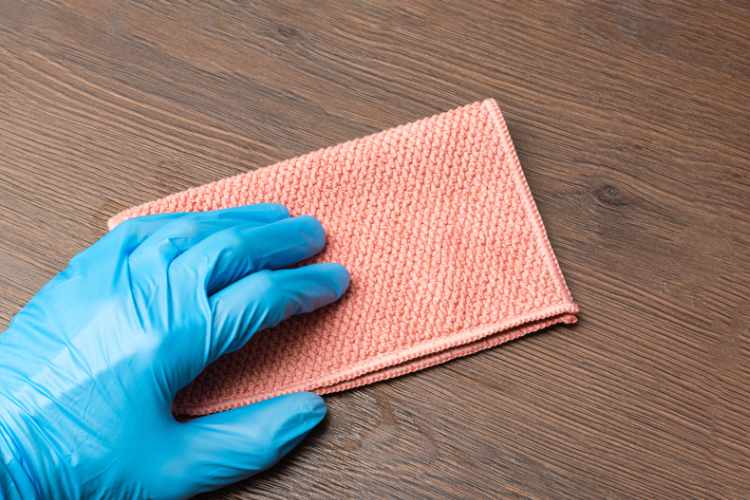
Germs need something to feed on! Give vinegar a head start by wiping down surfaces with soap and water or a microfiber cloth to make sure dirt is removed before you apply it.
Microfiber cloths are especially great at wiping up oils and sticky messes, which is why I love using them to save money on cleaning products.
If you clean up first then there are fewer bacteria for vinegar to deal with which means the number of pathogens reduces to undetectable levels.
What is vinegar?

For centuries, people have been using vinegar to clean their homes.
Vinegar is produced by bacterial fermentation of sugars and starches in organic matter. It is a cheap, biodegradable, and non-toxic way to clean your home.
Vinegar is a weak acidic solution. It’s good because it cleans and disinfects, it’s cheap and it doesn’t smell too bad.
It is the acetic acid that contributes to the characteristic aroma of vinegar as well as its role in preserving food and disinfection.
Different types of vinegar are made in different ways. The most common type, white vinegar, is made from grain-based ethanol which is converted to acetic acid and diluted to achieve a 5% acid content.
What type of vinegar is best to use for cleaning?
Vinegar is one of the staple cleaning products I have in my cupboard. I love it because it is natural, non-toxic, and cheap.
Vinegar can be made from anything containing sugar but white distilled vinegar is the best kind to use as a cleaner because it is the purest.
The American Vinegar Association says a gallon of distilled white vinegar has three times as much acetic acid as a gallon of wine.
Vinegar is made from a fermentation process that can take up to two years and then distilled or filtered to remove impurities. It has been used for centuries both in cooking and cleaning.
Originally vinegar was used for pickling, marinating and as medicine, but later people started using it to clean their homes.
Vinegar VS Bleach
Always go for bleach over vinegar if you need to kill most of the bacteria. Vinegar kills less, but here are some important distinctions.
- Vinegar is biodegradable, non-toxic and fairly cheap to buy.
- Bleach doesn’t remove soap scum as well as vinegar.
- Bleach doesn’t remove mildew stains and odors like vinegar does. Bleach only masks the odor of mildew, not the root cause of it.
- Bleach is harder on wood and fabrics than vinegar. According to the USDA, bleach can ruin wood finishes and dye laundry items.
- Bleach is safer to use than vinegar around kids and pets because it doesn’t have an overwhelming odor as vinegar does.
- Vinegar doesn’t need to be rinsed like bleach does so it is easier and faster to use.
- Bleach is weaker than vinegar so you have to work harder with bleach than vinegar.
Vinegar also has a deodorizing effect due to its acidic nature. This makes it useful for removing the musty odors and mildew growth commonly found in basements, as well as carpets and clothing that have gone unwashed for too long.
Important to note: Never mix vinegar and bleach because the two together produce dangerous toxic vapors.
How to clean with vinegar
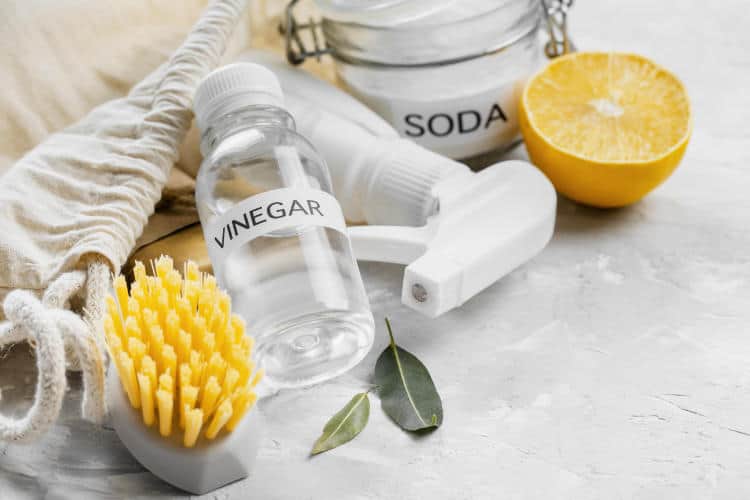
Vinegar can be used as a cleaner and as a decent disinfectant, though note that its disinfectant ability isn’t as good as commercial cleaners.
Vinegar is great for cleaning things like:
- Kitchen and bathroom counters – To disinfect and deodorize your kitchen counters, fill a spray bottle with ¼ cup white vinegar and 2 cups of water. Spray onto your countertops and wait 10 minutes before wiping down with a microfiber cloth.
- Dishwasher – To deodorize and clean a dishwasher: Fill your dishwasher with 1 cup of white vinegar and run on a hot cycle with no dishes inside. (Your dishes will be stained.)
- Deodorizing – To remove smells from upholstery, carpets and curtains make up a spray bottle. Do you have a smelly bedroom when you wake up? Vinegar could be your answer!
- Wine glasses – To remove wine rings from wine glasses, use 1 teaspoon of white vinegar per glass, fill with water and stir with a spoon.
- Stainless steel – To clean stainless steel, wipe with a vinegar-soaked cloth.
- Jars – To clean jars, fill with vinegar and put in the oven on low for about 10 minutes. Let them cool completely before removing them from the oven. The jars will be easier to clean, and you’ll get rid of any odors they may have picked up while in storage.
- Microwave – To clean your microwave, fill a microwave-safe bowl with water and 1 teaspoon of white vinegar. Cook for 2 minutes. Let stand in the microwave for 10 minutes. Wipe clean, and enjoy!
- Cutting boards – To get rid of the smell from wooden cutting boards, soak them in a mixture of ½ cup vinegar and ¼ cup water. Leave for 20 minutes and dry.
- Toilet bowl – To clean your toilet bowl: Use 1 cup of white vinegar added to the water in your toilet tank and let it stand for an hour before flushing.
- Washing machine – Add vinegar to your washing machine and run a cycle to clean the drum and pipes. Spray on your jeans to freshen them up and prevent shrinkage.
- Mirrors and Glass – Make up a spray bottle and spray on to glass including oven doors.
- Cleaning laptops and computer screens – Make up a spray bottle of 1 part water to 1 part vinegar, spray onto a microfibre cloth and wipe the screen.
- Laundry – add a half cup to the conditioner drawer and your laundry will be naturally soft. Vinegar is great for softening up towels and you can even use it when you wash laundry by hand.
- Chewing gum – heat a bowl of vinegar in the microwave and clean off the gum with a toothbrush. Find out more – how to get gum out of clothing with vinegar.
- Cleaning mildew from your patio cushions – spray neat white distilled vinegar onto your patio cushion and rub the stained area. Rinse off with your garden hose.
- Cleaning your washing machine – add a cup to the fabric softener compartment when you run a maintenance wash.
- Killing bugs – make up a spray bottle of vinegar and spray it directly onto spiders and insects to kill them. Here’s more on how to kill spiders naturally.
How to make vinegar cleaner
It’s super easy to make your own vinegar cleaner! Just add the following ingredients to a spray bottle.
- 1/2 cup white distilled vinegar
- 2 cups of water
- a couple of drops of essential oil (optional)

